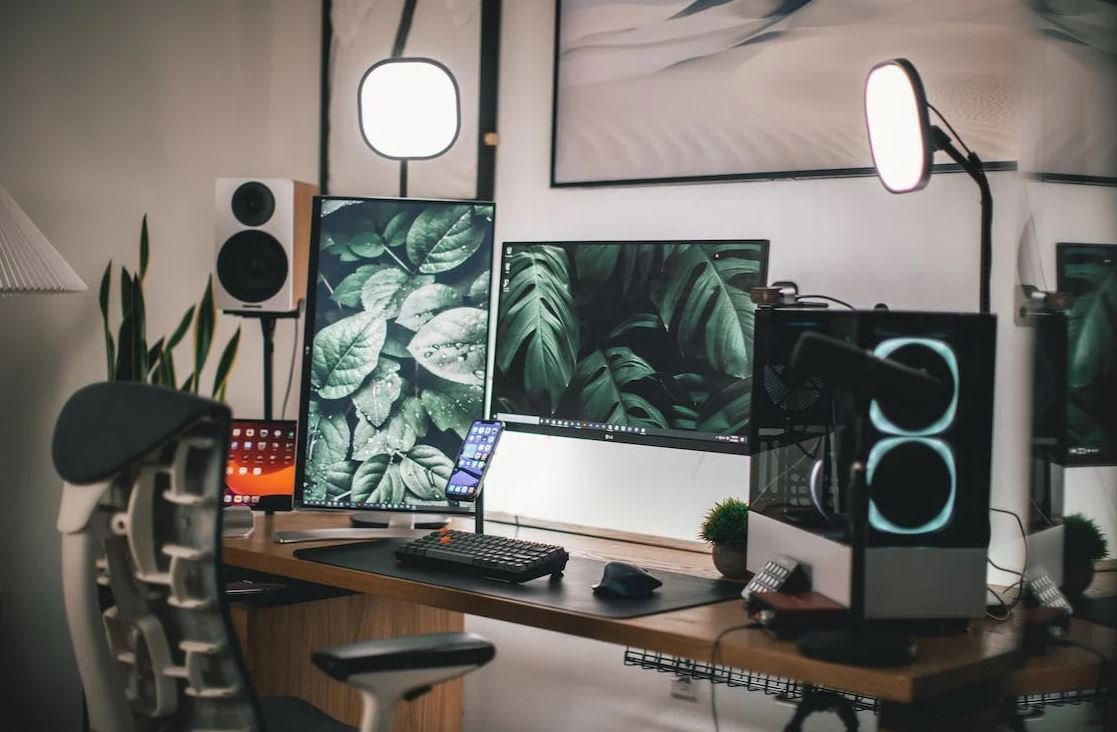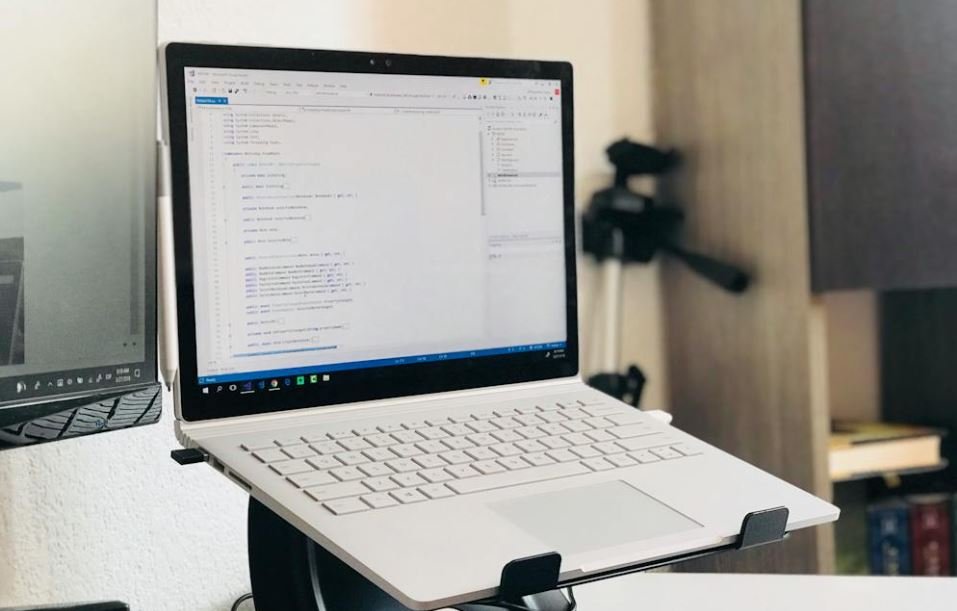How Does Generative Art Work
Generative art refers to artwork that has been created using a set of rules or algorithms defined by the artist or designer. Unlike traditional art, which is created manually, generative art is produced using a combination of programming, data, and randomness. This fascinating form of digital art has gained popularity in recent years due to its unique and innovative approach to artistic creation.
Key Takeaways:
- Generative art is created using algorithms and rules defined by the artist.
- It combines programming, data, and randomness as tools for artistic creation.
- Generative art allows for exploration and innovation in the artistic process.
Generative art can be created using a variety of programming languages and tools. Artists and designers work with code to define the parameters and rules that govern the generation of the artwork. This can include setting constraints on color, shape, size, or movement. Through programming, the artist can create an algorithm that generates unique and unpredictable compositions.
Generative art allows artists to relinquish some control and embrace the element of surprise. By introducing randomness into the process, unexpected outcomes can arise, leading to interesting and unconventional artistic expressions.
One of the key principles of generative art is emergence. This refers to the phenomenon where the complex behavior or patterns emerge from simple rules or interactions. Through the use of algorithms and data, generative art can produce intricate and complex compositions that go beyond what a human hand could create.
Generative Art in Practice
Generative art finds its applications in various fields, including visual art, music, design, and even architecture. Artists and designers use generative techniques to create unique and personalized pieces that challenge traditional artistic boundaries.
Generative art can be used to create interactive installations that respond to the environment or user input. Through sensor data or user interactions, the artwork can dynamically change or evolve, creating a dynamic and immersive experience.
Generative art breaks away from static, predetermined outcomes and allows for continuous transformation and adaptation. This aspect makes it particularly suitable for digital mediums and interactive experiences.
Exploring Generative Algorithms
Generative algorithms play a crucial role in the creation of generative art. These algorithms define the rules and parameters that determine how the artwork is generated. Artists can experiment with different algorithms and tweak the parameters to generate a wide range of outputs.
Generative algorithms offer endless possibilities for artistic exploration and experimentation. By adjusting variables such as randomness, complexity, or interaction dynamics, artists can generate a diverse set of outcomes, allowing for the exploration of new artistic territories.
| Algorithm Name | Description |
|---|---|
| Cellular Automata | A grid of cells that evolve and change based on predefined rules and neighboring cells. |
| L-systems | A string rewriting system that generates complex fractal patterns. |
| Genetic Algorithms | A population-based optimization algorithm inspired by natural selection processes. |
The Impact and Future of Generative Art
Generative art has revolutionized the way we perceive and create art. It has expanded the possibilities of artistic expression and introduced a new level of collaboration between humans and computers.
Generative art serves as a catalyst for creativity and innovation, pushing the boundaries of traditional art forms. As technology continues to advance, generative art is likely to play an increasing role in our visual culture, offering new avenues for artistic exploration and expression.
| Unlimited creative possibilities | Allows for exploration and experimentation |
| Facilitates dynamic and interactive experiences | Enables collaboration between humans and algorithms |
| Promotes innovative approaches to artistic creation | Offers a fresh perspective on traditional art forms |
In conclusion, generative art utilizes algorithms, programming, and randomness to create innovative and unpredictable artwork. It breaks away from traditional manual creation and allows for exploration, emergence, and continuous transformation. With endless creative possibilities and the ability to adapt and respond to its environment, generative art is changing the way we perceive and create art.

Common Misconceptions
Generative Art is created randomly
One common misconception about generative art is that it is created randomly without any human intervention. While generative art may utilize algorithms or mathematical formulas to generate variations, it is important to note that humans play a significant role in the creation process.
- Generative art requires programming or scripting skills
- Artists make intentional design choices when creating generative art
- Generative art can be iteratively refined and customized by the artist
Generative Art lacks artistic value
Another misconception is that generative art lacks artistic value because it is created by computers or automated processes. However, generative artists use algorithms and software as tools to express their creativity and vision, much like traditional artists use brushes and paint.
- Generative art can evoke emotions and provoke thought
- Generative art can be displayed and appreciated in galleries and exhibitions
- Generative art pushes the boundaries of traditional art forms
Generative Art is always digital
Many people believe that generative art exists solely in the digital realm. While digital platforms and software provide convenient tools for creating generative art, it is not exclusively limited to the digital domain. Artists can also create physical manifestations of generative art using various mediums.
- Generative art can be printed or transferred to physical media
- Artists can use generative techniques to create sculptures and installations
- Generative art can be integrated into architectural designs and public spaces
Generative Art is too complex for non-technical artists
Some people believe that generative art is only accessible to artists with advanced technical skills or knowledge of programming. While technical proficiency can certainly enhance the possibilities in generative art, it is not a prerequisite. There are user-friendly tools and applications available that make it easier for non-technical artists to explore and create generative art.
- Generative art software often includes intuitive interfaces and visual programming options
- Artists can collaborate with programmers or technologists to bring their generative ideas to life
- Generative art tutorials and resources are available for artists of all technical backgrounds
Generative Art is purely decorative
Some people perceive generative art as purely decorative, devoid of deeper meaning or conceptual depth. However, generative art can explore complex themes, challenge established norms, and offer unique perspectives on social, cultural, and environmental issues.
- Generative art can communicate narratives and tell stories
- Generative art can reflect and critique societal trends and phenomena
- Generative art can engage the audience in interactive and participatory experiences

Table 1: Famous Generative Artists
In the world of art, generative art has revolutionized the way artists conceptualize and create their masterpieces. This table showcases some of the most renowned generative artists who have left an indelible mark on the field.
| Artist | Nationality | Notable Works |
|---|---|---|
| Golan Levin | American | “Recursive Drawing,” “Interactive Plant Growing” |
| Manfred Mohr | German | “P-967 A1,” “Random Walks” |
| Marius Watz | Norwegian | “Algorithmic Beauty,” “OpenGL Textures” |
| Vera Molnár | Hungarian | “Machine Imaginaire,” “Instants Éphémères” |
| Casey Reas | American | “Process 18,” “Moral Philosophy” |
Table 2: Key Influences in Generative Art
To truly comprehend the complexity and depth of generative art, it is essential to examine the key influences that have shaped this artistic discipline. The table below highlights some of the significant influences in the realm of generative art.
| Influence | Explanation | Examples |
|---|---|---|
| Cybernetics | The science of control and communication in machines and living systems, inspiring generative techniques. | Nicholas Negroponte’s Architecture Machine Group |
| Nature | The intricate and organic processes found in nature have served as inspiration for generative artists. | Fractals, cellular automata, and evolutionary algorithms |
| Algorithmic Thinking | The use of step-by-step procedures to solve problems or create artworks, a staple in generative art. | John Horton Conway’s “Game of Life,” L-Systems |
| Mathematics | The application of mathematical concepts and formulas to generate art that conveys precision and complexity. | Golden ratio, Fibonacci sequence |
| Computer Science | The advent of technology and programming languages has opened up new possibilities for generative art. | Processing, Max/MSP, Pure Data |
Table 3: Generative Art Forms
The realm of generative art encompasses various forms, each offering unique aesthetic qualities and creative approaches. Explore the diverse range of generative art forms in the table below:
| Art Form | Description | Artists |
|---|---|---|
| Algorithmic Art | Artistic creations generated using mathematical algorithms to determine the composition or visual elements. | Rafael Lozano-Hemmer, Manfred Mohr |
| Interactive Art | Artworks that engage viewers’ participation, often utilizing real-time data or human interaction. | Golan Levin, Casey Reas |
| Procedural Art | Art generated through the execution of defined procedures, often resulting in complex and intricate patterns. | Marius Watz, Mark J. Stock |
| Simulation Art | Art created by simulating natural or artificial phenomena, offering virtual experiences of reality. | Karl Sims, Ed Burton |
| Data-Driven Art | Artworks generated by translating data sets into visual representations, exploring patterns and insights. | Aaron Koblin, Jer Thorp |
Table 4: Generative Art Output Techniques
To materialize generative art, artists leverage various output techniques to bring their creations to life. This table showcases some common techniques employed in the production of generative artworks:
| Output Technique | Description | Examples |
|---|---|---|
| Artworks transferred onto physical mediums, such as paper, canvas, or other materials using printers or manual processes. | Screen printing, inkjet printing | |
| Projection | Art projected onto various surfaces, such as screens, walls, or objects, often accompanied by interactivity. | Video projection mapping, interactive installations |
| Sculpture | Physical representations of generative art using different sculpting techniques and materials. | 3D printing, clay modeling |
| Installation | Artworks designed specifically for dedicated spaces, employing diverse materials, technologies, and sensor-based interactions. | Light installations, kinetic sculptures |
| Virtual/Augmented Reality | Generative art experienced through virtual or augmented environments, creating immersive digital experiences. | VR headsets, smartphone apps |
Table 5: Major Tools and Software for Generative Art
Generative artists utilize a wide range of tools and software to develop their artworks efficiently. This table highlights some major software and programming languages commonly used within the generative art community:
| Tool/Software | Description | Uses |
|---|---|---|
| Processing | An open-source programming language and IDE built for visual arts, enabling easy creation of generative art. | Creating interactive installations, data visualization |
| Max/MSP | A visual programming language for audio and multimedia projects, often utilized for generative audiovisual art. | Live performances, audiovisual installations |
| Pure Data | An open-source visual programming language similar to Max/MSP, favored by generative audio artists. | Live coding, soundscape generation |
| Cinder | A C++ framework for creative coding, primarily used for creating interactive and visually captivating generative art. | Real-time simulations, graphics-intensive projects |
| OpenFrameworks | A C++ toolkit for creative coding, allowing artists to build multimedia applications for generative art. | Real-time animations, computer vision projects |
Table 6: Impact of Generative Art in Society
Generative art not only influences the art world but also carries implications for broader societal contexts. The table below highlights some of the ways generative art has impacted society:
| Impact | Description | Examples |
|---|---|---|
| Medicine | Generative art techniques applied in medical imaging, aiding diagnoses and improving surgical simulators. | Magnetic resonance imaging (MRI), computer-assisted surgery |
| Advertising | Generative techniques used in creating visually captivating and personalized advertising campaigns. | Dynamic product recommendations, algorithmic optimization |
| Education | Generative art utilized as a teaching tool, promoting understanding of complex concepts through interactive visuals. | Data visualization for educational purposes |
| Entertainment | Generative art-driven experiences, such as interactive installations and immersive virtual reality games, enhance entertainment options. | Video games, digital art exhibitions |
| Architecture | Generative techniques employed in architectural design to create innovative and sustainable structures. | Parametric design, digital fabrication |
Table 7: Generative Art Exhibition Locations
Generative art exhibitions provide platforms for artists to showcase their groundbreaking creations. Explore notable exhibition locations in the table below:
| Exhibition | Location | Description |
|---|---|---|
| ElectroScape | Rio de Janeiro, Brazil | An exhibition that merges generative art and electroacoustic music within an immersive environment. |
| Coded Chromatics | London, United Kingdom | A collective exhibition showcasing diverse generative artworks exploring the fusion of color and code. |
| Bits and Canvas | New York City, USA | An interactive generative art exhibition celebrated for its fusion of traditional and digital art forms. |
| Code Motion | Amsterdam, Netherlands | A festival celebrating generative art, creative coding, and interactive installations. |
| Digital Grotesque | Zurich, Switzerland | An exhibition featuring 3D-printed architectural structures generated through algorithms. |
Table 8: Pioneering Generative Art Organizations
Several organizations have played a pivotal role in advancing generative art as a recognized field. Explore some of the pioneering organizations in the table below:
| Organization | Year Established | Description |
|---|---|---|
| The Algorists | 1995 | An international artist collective focused on promoting the collaboration and exchange of generative art ideas. |
| Generator.x | 2005 | A platform for exploration and discussion of generative art through conferences, exhibitions, and workshops. |
| Processing Foundation | 2012 | A nonprofit organization dedicated to nurturing the open-source software, Processing, and fostering generative art. |
| International Society for Electronic Arts (ISEA) | 1990 | Bringing together artists, theorists, and institutions to promote electronic and digital art, including generative art. |
| Artificial Intelligence and Simulation of Behaviour (AISB) | 1964 | An organization exploring the intersection of artificial intelligence, behavior, and generative art. |
Table 9: Applications of Generative Art Beyond Visuals
Beyond visual aesthetics, generative art has found applications in various domains, influencing fields beyond art. The table below showcases some noteworthy applications:
| Domain | Application | Examples |
|---|---|---|
| Music | Artistic compositions generated through algorithms, resulting in unique and experimental soundscapes. | Algorithmic music composition, interactive sound installations |
| Fashion | Generative techniques applied in clothing design or fabric pattern generation, fostering innovative fashion creations. | Pattern generation, parametric design |
| Literature | Generative literature experiments, where algorithms generate text or facilitate interactive storytelling experiences. | Algorithmic poetry, interactive novels |
| Architecture | Generative algorithms utilized in architectural design and urban planning, promoting novel and sustainable solutions. | Parametric design, adaptive architecture |
| Data Analysis | Generative algorithms employed in data analysis workflows, facilitating pattern discovery and data visualization. | Interactive data visualizations, exploratory data analysis |
Table 10: Advantages and Challenges of Generative Art
Generative art offers numerous advantages but also presents certain challenges for both artists and viewers alike. Discover some of these advantages and challenges in the table below:
| Advantage | Description |
|---|---|
| Limitless Creativity | Generative art enables artists to explore vast creative possibilities with endless variations and outcomes. |
| Exploration of Complex Systems | Generative art allows artists to delve into intricate and dynamic systems, fostering a deeper understanding of complexity. |
| Unique Artistic Expressions | Generative techniques provide artists with tools to generate artworks that are inherently distinct and original. |
| Engaging Viewer Experiences | Generative art often captivates viewers through interactive, dynamic, and immersive encounters. |
| Challenge | Description |
| Technical Expertise | Creating generative art may require artists to possess a strong understanding of programming and algorithmic concepts. |
| Reproducibility | Due to the inherent randomness and generative nature, reproducing generative art can be challenging and yield non-identical results. |
| Critical Analysis | Viewers may struggle to interpret and analyze generative art pieces, as they often depart from traditional artistic conventions. |
| Ethical Concerns | Artists must navigate ethical considerations when incorporating generative systems that might generate unintended or undesired outputs. |
Generative art has opened new frontiers in artistic creation, blending technology, mathematics, and aesthetics. From pioneering artists to innovative applications, the tables showcased the diverse facets of generative art. With its limitless potential for creativity and impact on various domains, generative art continues to reshape the boundary between human ingenuity and computational algorithms. As we advance further into the realm of generative art, we can expect even more astonishing discoveries and groundbreaking artworks that challenge our preconceptions of artistic creation.
Frequently Asked Questions
How Does Generative Art Work?
Generative art is created by using algorithms and computer programs to generate artwork. It involves using rules, randomness, and information from various sources to create unique and often complex visual or audiovisual compositions. These programs can manipulate mathematical formulas, data inputs, and other parameters to generate a wide variety of artistic outputs.
What are the main techniques used in generative art?
Some of the main techniques used in generative art include fractal generation, cellular automata, algorithmic drawing, procedural modeling, and neural networks. These techniques can be combined and customized by artists to create specific visual effects and compositions.
Can generative art be created without using computers?
While generative art heavily relies on the use of computers and software, it is possible to create generative art manually without digital tools. Artists can employ traditional methods such as drawing or painting using systematic processes and rules to create generative artworks.
How can I start creating generative art?
To start creating generative art, you will need to have coding or programming skills and familiarity with a programming language or software environment commonly used for generative art, such as Processing, openFrameworks, or Max/MSP. There are also online resources and tutorials available which can help beginners learn the basics of generative art.
What is the role of randomness in generative art?
Randomness plays a crucial role in generative art as it introduces unpredictability and variation into the artwork. Artists can incorporate randomness into their algorithms to create unique patterns, color combinations, or shapes that would not be possible to achieve through a deterministic approach.
Can generative art be interactive?
Yes, generative art can be interactive. Artists can create interactive generative art by allowing users to control or influence the parameters of the generative algorithms in real-time. This can be done through user input devices like keyboards, mouse, or sensors, enabling users to actively participate in the creation process.
Is generative art considered a form of artificial intelligence?
Generative art often utilizes artificial intelligence techniques, such as neural networks, but as a whole, it is not considered solely a form of artificial intelligence. Generative art combines both the creative intentions of the artist and the algorithms or systems used to generate the artwork.
What are some examples of famous generative art installations?
Some famous generative art installations include “Rain Room” by Random International, which creates a simulated experience of rainfall that stops wherever a person walks, “The Bay Lights” by Leo Villareal, a large-scale light sculpture on the San Francisco Bay Bridge, and “Cosmic Quilt” by Kit Webster, an immersive audiovisual installation that uses generative algorithms to create mesmerizing patterns of light and sound.
How is generative art different from traditional art?
Generative art differs from traditional art in that it relies on computer programs and algorithms to create the artwork. Traditional art is based on manual techniques like painting, sculpting, or drawing, whereas generative art leverages computational processes and often aims to create dynamic, evolving, or interactive experiences.
Can generative art be reproduced or replicated?
While generative art can be replicated by running the same algorithms or system, the resulting artwork may not be exactly the same due to the potential for randomness and variations within the generative process. Additionally, generative art often allows for user interactions or requires specific software or hardware setups, making direct reproduction challenging.




